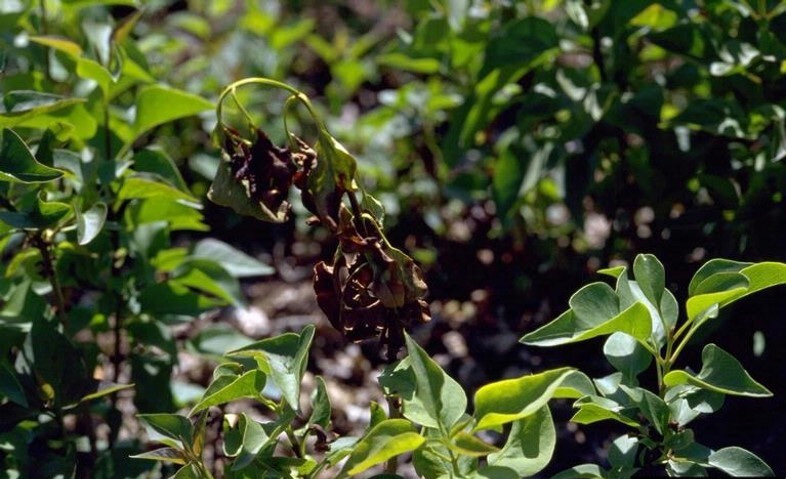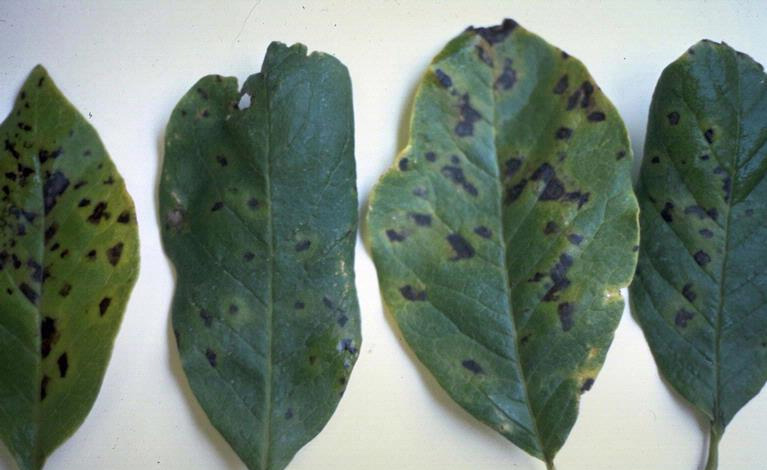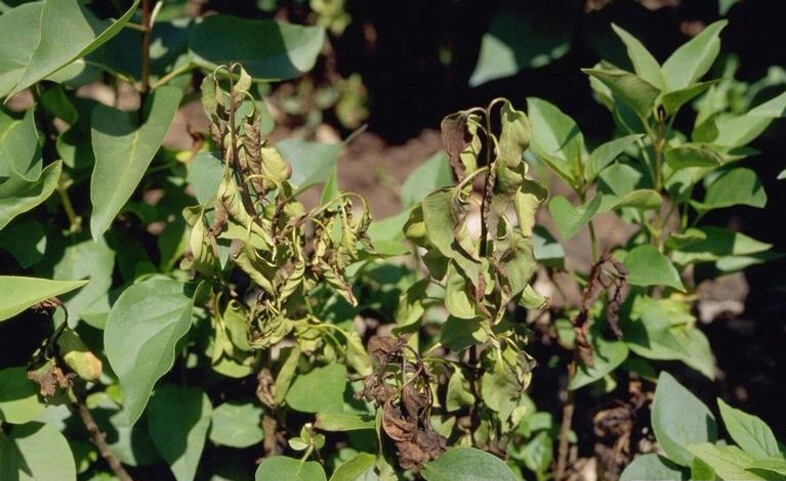Bacterial Blight of Lilac (Scientific Name of Pathogen: Pseudomonas syringae pv. syringae - Bacterium)

Figure 1: Shoot dieback following bacterial infection. Photo by William Jacobi, Colorado State University, Bugwood.org.
Hosts:
All lilac shrubs and trees
Damage/symptoms:
In spring, small, water-soaked lesions appear on the leaves. Lesions may expand and coalesce into larger brown areas. Affected young shoots are quickly girdled, show wilting and blackening of stems, leaves, and/or flower clusters. Dark streaks may be visible on affected shoots.
Disease cycle:

Figure 2: Dark brown leaf spots with light green margins and dieback of branches due to bacterial blight infection. Photo by William Jacobi, Colorado State University, Bugwood.org.
The bacterium can overwinter in infected twigs and cankers on the plant, in dead plant debris, on neighboring plants, or in the soil surrounding the plant. In the spring, the bacterium can then be spread to susceptible plants by splashing water, insect vectors, or pruning tools. Pseudomonas spp. infects through open wounds in the plant.
Management:
Focus on supporting plant vigor by providing adequate amounts of water and nutrients during the growing season. Prune out and discard infected branches and leaves. Make the pruning cut 10 to 12 inches below the visible symptoms of disease and sterilize tools between cuts with 70% ethyl alcohol or a standard household

Figure 3: Multiple young shoots affected by bacterial blight. Photo by William Jacobi, Colorado State University, Bugwood.org.
disinfectant spray. Avoid hitting the foliage during sprinkler irrigation to minimize possible spread of the bacteria. Consider healthy pruning to increase air flow and light penetration. Chemical control is not recommended in the urban setting.
By Eva Grimme, MSU Associate Extension Specialist III. March 2024. For more information, contact diagnostics@montana.edu.
This March 2024 fact sheet is also available as a printable PDF (394KB).
Disclaimer: These recommendations are provided only as a guide. It is always the pesticide applicator’s responsibility, by law, to read and follow all current label directions for the specific pesticide being used. The authors and Montana State University assume no liability resulting from the use of these recommendations. The Montana State University Extension Service is an ADA/EO/AA/Veteran’s Preference Employer and Provider of Educational Outreach.
